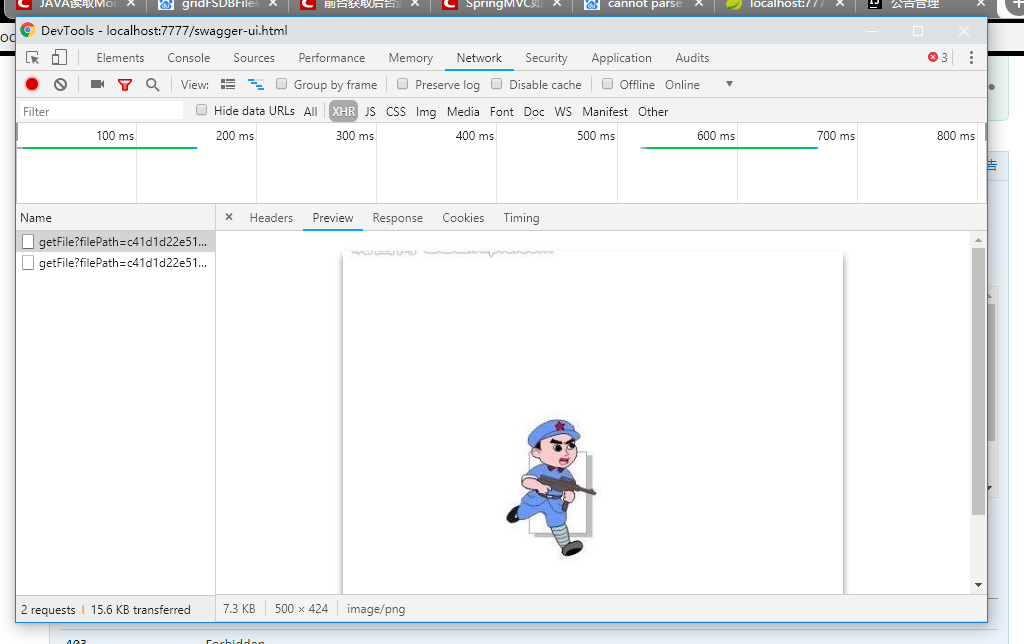What do I need to do to save an image my program has generated (possibly from the camera, possibly not) to the system photo library on the iPhone?
问题:
回答1:
You can use this function:
UIImageWriteToSavedPhotosAlbum(UIImage *image,
id completionTarget,
SEL completionSelector,
void *contextInfo);
You only need completionTarget, completionSelector and contextInfo if you want to be notified when the UIImage is done saving, otherwise you can pass in nil.
See the official documentation for UIImageWriteToSavedPhotosAlbum().
回答2:
Deprecated in iOS 9.0.
There`s much more fast then UIImageWriteToSavedPhotosAlbum way to do it using iOS 4.0+ AssetsLibrary framework
ALAssetsLibrary *library = [[ALAssetsLibrary alloc] init];
[library writeImageToSavedPhotosAlbum:[image CGImage] orientation:(ALAssetOrientation)[image imageOrientation] completionBlock:^(NSURL *assetURL, NSError *error){
if (error) {
// TODO: error handling
} else {
// TODO: success handling
}
}];
[library release];
回答3:
The simplest way is:
UIImageWriteToSavedPhotosAlbum(myUIImage, nil, nil, nil);
For Swift, you can refer to Saving to the iOS photo library using swift
回答4:
One thing to remember: If you use a callback, make sure that your selector conforms to the following form:
- (void) image: (UIImage *) image didFinishSavingWithError: (NSError *) error contextInfo: (void *) contextInfo;
Otherwise, you\'ll crash with an error such as the following:
[NSInvocation setArgument:atIndex:]: index (2) out of bounds [-1, 1]
回答5:
Just pass the images from an array to it like so
-(void) saveMePlease {
//Loop through the array here
for (int i=0:i<[arrayOfPhotos count]:i++){
NSString *file = [arrayOfPhotos objectAtIndex:i];
NSString *path = [get the path of the image like you would in DOCS FOLDER or whatever];
NSString *imagePath = [path stringByAppendingString:file];
UIImage *image = [[[UIImage alloc] initWithContentsOfFile:imagePath]autorelease];
//Now it will do this for each photo in the array
UIImageWriteToSavedPhotosAlbum(image, nil, nil, nil);
}
}
Sorry for typo\'s kinda just did this on the fly but you get the point
回答6:
When saving an array of photos, don\'t use a for loop, do the following
-(void)saveToAlbum{
[self performSelectorInBackground:@selector(startSavingToAlbum) withObject:nil];
}
-(void)startSavingToAlbum{
currentSavingIndex = 0;
UIImage* img = arrayOfPhoto[currentSavingIndex];//get your image
UIImageWriteToSavedPhotosAlbum(img, self, @selector(image:didFinishSavingWithError:contextInfo:), nil);
}
- (void)image: (UIImage *) image didFinishSavingWithError: (NSError *) error contextInfo: (void *) contextInfo{ //can also handle error message as well
currentSavingIndex ++;
if (currentSavingIndex >= arrayOfPhoto.count) {
return; //notify the user it\'s done.
}
else
{
UIImage* img = arrayOfPhoto[currentSavingIndex];
UIImageWriteToSavedPhotosAlbum(img, self, @selector(image:didFinishSavingWithError:contextInfo:), nil);
}
}
回答7:
In Swift:
// Save it to the camera roll / saved photo album
// UIImageWriteToSavedPhotosAlbum(self.myUIImageView.image, nil, nil, nil) or
UIImageWriteToSavedPhotosAlbum(self.myUIImageView.image, self, \"image:didFinishSavingWithError:contextInfo:\", nil)
func image(image: UIImage!, didFinishSavingWithError error: NSError!, contextInfo: AnyObject!) {
if (error != nil) {
// Something wrong happened.
} else {
// Everything is alright.
}
}
回答8:
Below function would work. You can copy from here and paste there...
-(void)savePhotoToAlbum:(UIImage*)imageToSave {
CGImageRef imageRef = imageToSave.CGImage;
NSDictionary *metadata = [NSDictionary new]; // you can add
ALAssetsLibrary *library = [[ALAssetsLibrary alloc] init];
[library writeImageToSavedPhotosAlbum:imageRef metadata:metadata completionBlock:^(NSURL *assetURL,NSError *error){
if(error) {
NSLog(@\"Image save eror\");
}
}];
}
回答9:
homeDirectoryPath = NSHomeDirectory();
unexpandedPath = [homeDirectoryPath stringByAppendingString:@\"/Pictures/\"];
folderPath = [NSString pathWithComponents:[NSArray arrayWithObjects:[NSString stringWithString:[unexpandedPath stringByExpandingTildeInPath]], nil]];
unexpandedImagePath = [folderPath stringByAppendingString:@\"/image.png\"];
imagePath = [NSString pathWithComponents:[NSArray arrayWithObjects:[NSString stringWithString:[unexpandedImagePath stringByExpandingTildeInPath]], nil]];
if (![[NSFileManager defaultManager] fileExistsAtPath:folderPath isDirectory:NULL]) {
[[NSFileManager defaultManager] createDirectoryAtPath:folderPath attributes:nil];
}
回答10:
my last answer will do it..
for each image you want to save, add it to a NSMutableArray
//in the .h file put:
NSMutableArray *myPhotoArray;
///then in the .m
- (void) viewDidLoad {
myPhotoArray = [[NSMutableArray alloc]init];
}
//However Your getting images
- (void) someOtherMethod {
UIImage *someImage = [your prefered method of using this];
[myPhotoArray addObject:someImage];
}
-(void) saveMePlease {
//Loop through the array here
for (int i=0:i<[myPhotoArray count]:i++){
NSString *file = [myPhotoArray objectAtIndex:i];
NSString *path = [get the path of the image like you would in DOCS FOLDER or whatever];
NSString *imagePath = [path stringByAppendingString:file];
UIImage *image = [[[UIImage alloc] initWithContentsOfFile:imagePath]autorelease];
//Now it will do this for each photo in the array
UIImageWriteToSavedPhotosAlbum(image, nil, nil, nil);
}
}
回答11:
I created a UIImageView category for this, based on some of the answers above.
Header File:
@interface UIImageView (SaveImage) <UIActionSheetDelegate>
- (void)addHoldToSave;
@end
Implementation
@implementation UIImageView (SaveImage)
- (void)addHoldToSave{
UILongPressGestureRecognizer* longPress = [[UILongPressGestureRecognizer alloc] initWithTarget:self action:@selector(handleLongPress:)];
longPress.minimumPressDuration = 1.0f;
[self addGestureRecognizer:longPress];
}
- (void)handleLongPress:(UILongPressGestureRecognizer*)sender {
if (sender.state == UIGestureRecognizerStateEnded) {
UIActionSheet* _attachmentMenuSheet = [[UIActionSheet alloc] initWithTitle:nil
delegate:self
cancelButtonTitle:@\"Cancel\"
destructiveButtonTitle:nil
otherButtonTitles:@\"Save Image\", nil];
[_attachmentMenuSheet showInView:[[UIView alloc] initWithFrame:self.frame]];
}
else if (sender.state == UIGestureRecognizerStateBegan){
//Do nothing
}
}
-(void)actionSheet:(UIActionSheet *)actionSheet clickedButtonAtIndex:(NSInteger)buttonIndex{
if (buttonIndex == 0) {
UIImageWriteToSavedPhotosAlbum(self.image, nil,nil, nil);
}
}
@end
Now simply call this function on your imageview:
[self.imageView addHoldToSave];
Optionally you can alter the minimumPressDuration parameter.
回答12:
In Swift 2.2
UIImageWriteToSavedPhotosAlbum(image: UIImage, _ completionTarget: AnyObject?, _ completionSelector: Selector, _ contextInfo: UnsafeMutablePointer<Void>)
If you do not want to be notified when the image is done saving then you may pass nil in the completionTarget, completionSelector and contextInfo parameters.
Example:
UIImageWriteToSavedPhotosAlbum(image, self, #selector(self.imageSaved(_:didFinishSavingWithError:contextInfo:)), nil)
func imageSaved(image: UIImage!, didFinishSavingWithError error: NSError?, contextInfo: AnyObject?) {
if (error != nil) {
// Something wrong happened.
} else {
// Everything is alright.
}
}
The important thing to note here is that your method that observes the image saving should have these 3 parameters else you will run into NSInvocation errors.
Hope it helps.
回答13:
You can use this
dispatch_async(dispatch_get_global_queue(DISPATCH_QUEUE_PRIORITY_DEFAULT, 0), ^{
UIImageWriteToSavedPhotosAlbum(img.image, nil, nil, nil);
});



